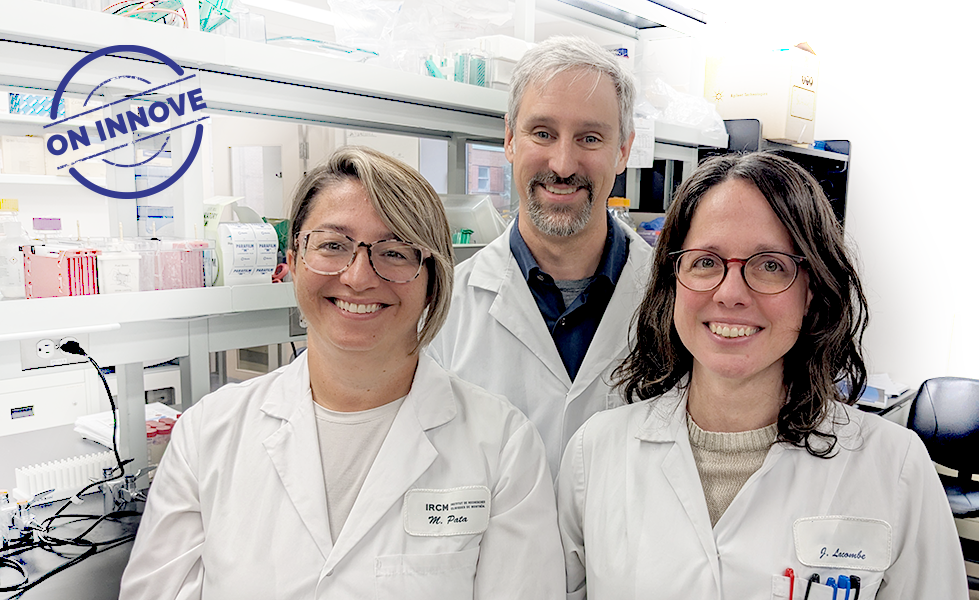
From left to right: Monica Pata, Mathieu Ferron and Julie Lacombe.
Major work from the laboratory of Dr. Mathieu Ferron, Director of the Molecular Physiology Research Unit at the Montreal Clinical Research Institute (IRCM) and Associate Professor in the Department of Medicine at the Université de Montréal, was just published in the journal Diabetes and sheds new light on the cellular mechanisms causing insulin resistance in type 2 diabetes, a disease affecting more than 1.2 million people in Quebec only.
Type 2 diabetes is a complex condition for which there is no cure, making it a chronic condition. It is characterized by a reduction of cells’ ability to respond to insulin. This is known as insulin resistance. The cellular mechanisms causing insulin resistance are far from fully understood, but the Ferron laboratory is committed to advance knowledge on this front.
Insulin is a hormone that controls glucose (sugar) levels in the blood. It acts by binding to its receptor, which is present on the surface of cells in several organs such as muscles, adipose tissue and liver.
In this study, Dr. Ferron's laboratory focused on a protein called GAS6, which is vitamin K-dependent. Previous studies had suggested that in humans, circulating levels of GAS6 were positively associated with insulin resistance and type 2 diabetes. However, the mechanism by which GAS6 might cause insulin resistance and type 2 diabetes remained unknown. The team was able to demonstrate that the absence of GAS6 in mouse models prevented insulin resistance caused by a high-fat, high-sugar diet. Conversely, when GAS6 levels in the blood were artificially increased, the team observed insulin resistance.
Why This Is Important
This is the first time that this signalling pathway (GAS6 and AXL) is directly implicated in insulin resistance. This work also suggests that GAS6 or its receptor AXL could be therapeutic targets for the treatment of insulin resistance.
In Detail
Like insulin, GAS6 acts on cells via a receptor called AXL. This work shows that AXL is not only present in muscle cells but can also bind to the insulin receptor in these same cells. Moreover, when GAS6 binds to its receptor on muscle cells, they no longer respond to insulin in the same way. It's as if GAS6 and AXL were “reprogramming” the insulin response. In fact, it seems that GAS6, by binding to AXL on the cell surface, draws the insulin receptor into a compartment called the endosome (which acts as a sort of recycling bin for the cell), diminishing the cell's ability to respond to insulin.
Future Validation in the Ferron Laboratory
Dr. Ferron's team intends to test the effect of molecules that can block AXL activation by GAS6 in diabetic mouse models. This could lead to a new approach to the treatment of type 2 diabetes.
Behind This Work
This research was carried out in the Ferron laboratory by doctoral student Céline Schott, master's student Amélie Germain, research associate Julie Lacombe and research assistant Monica Pata. Other collaborators include Denis Faubert and Jonathan Boulais (proteomic analyses), Peter Carmeliet (KU Leuven, Belgium) and Dr. Jean-François Côté (researcher and director of the Cytoskeleton Organization and Cell Migration Research Unit at the IRCM).
This work was funded by Diabetes Canada and the Canadian Institutes of Health Research (CIHR).
Full article: https://doi.org/10.2337/db23-0802



